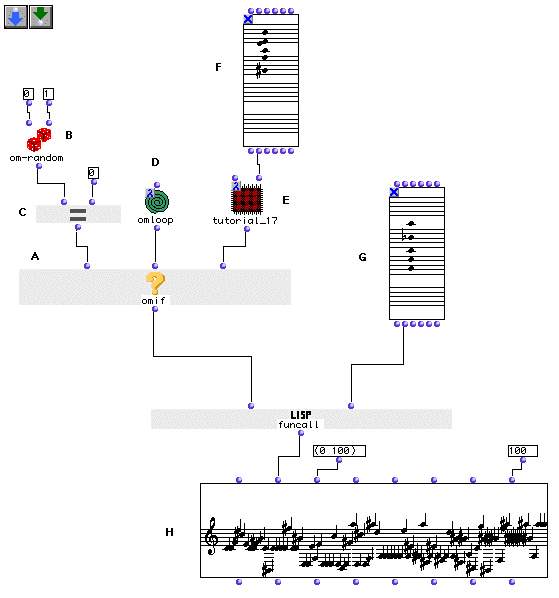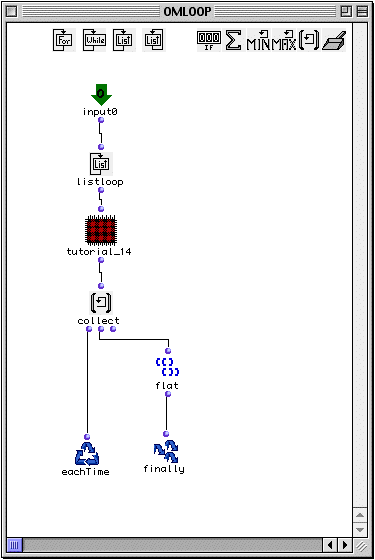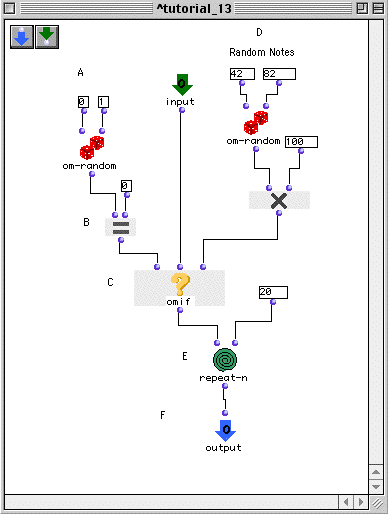OpenMusic Tutorials
Prev| Chapter 12. Lambda Functions| Next
Tutorial 35: funcall with Lambda Functions
Topics
Calling a random function using funcall.
Key Modules Used
funcall, omif, om-random,
omloop
The Concept:
funcall is like a single-shot version of
mapcar; it takes the lambda function at its first input and
passes it whatever comes in at the other inputs. Like mapcar,
it usually should have as many optional inputs as the lambda function it is
calling. funcall allows you to call a function as you would
evaluate any other data. Here, we use an omif function with a
random outcome (thanks to om-random and the
predicate om=) to send oneo of
two lambda functions to funcall. Whichever one we choose,
funcall will apply it to the Chord at (G).
The Patch:

So, starting with Chord (G), we will perform one of two procedures on it. Either we will use it as a reservoir to construct a random sequence of notes as in Tutorial 14 or the interpolation procedure of Tutorial 18, which will interpolate a series of notes between this Chord and another.
Let’s look at the loop at (D).

Inside is an abstraction of the patch from Tutorial 14, with an input and an output added:

The result will be that the Tutorial 14 process is carried out for each note of the chord.
The other possible function is an abstraction of the patch from Tutorial 18:

…modified to accept two Chords as input and perform the interpolation process on them as outlined in Tutorial 18.
 |
Note that the second Chord for the interpolation is coming
in from outside the patch. This demonstrates that the functions in lambda
mode can still take data at their inputs, provided that the inputs are not
going to be acted upon by the funcall or whatever is calling
them. Remember how we said that funcall usually has to have
as many optional inputs as the function it is calling? Well, here is the
exception. Our funcall here has one optional input. (In
addition to the mandatory first input.) The abstraction has two inputs! But
funcall will only pass data to the first one since it was
only given one argument at its additional inputs. The leaves the second
argument of the abstration free; in fact, we must pass something to it in
order for it to function correctly in lambda mode. Try disconnecting the
second input and see the error.
—|—
Prev| Home| Next
—|—|—
Tutorial 34: Introduction to Lambda Functions| Up| Flow
Control III: More Loops!